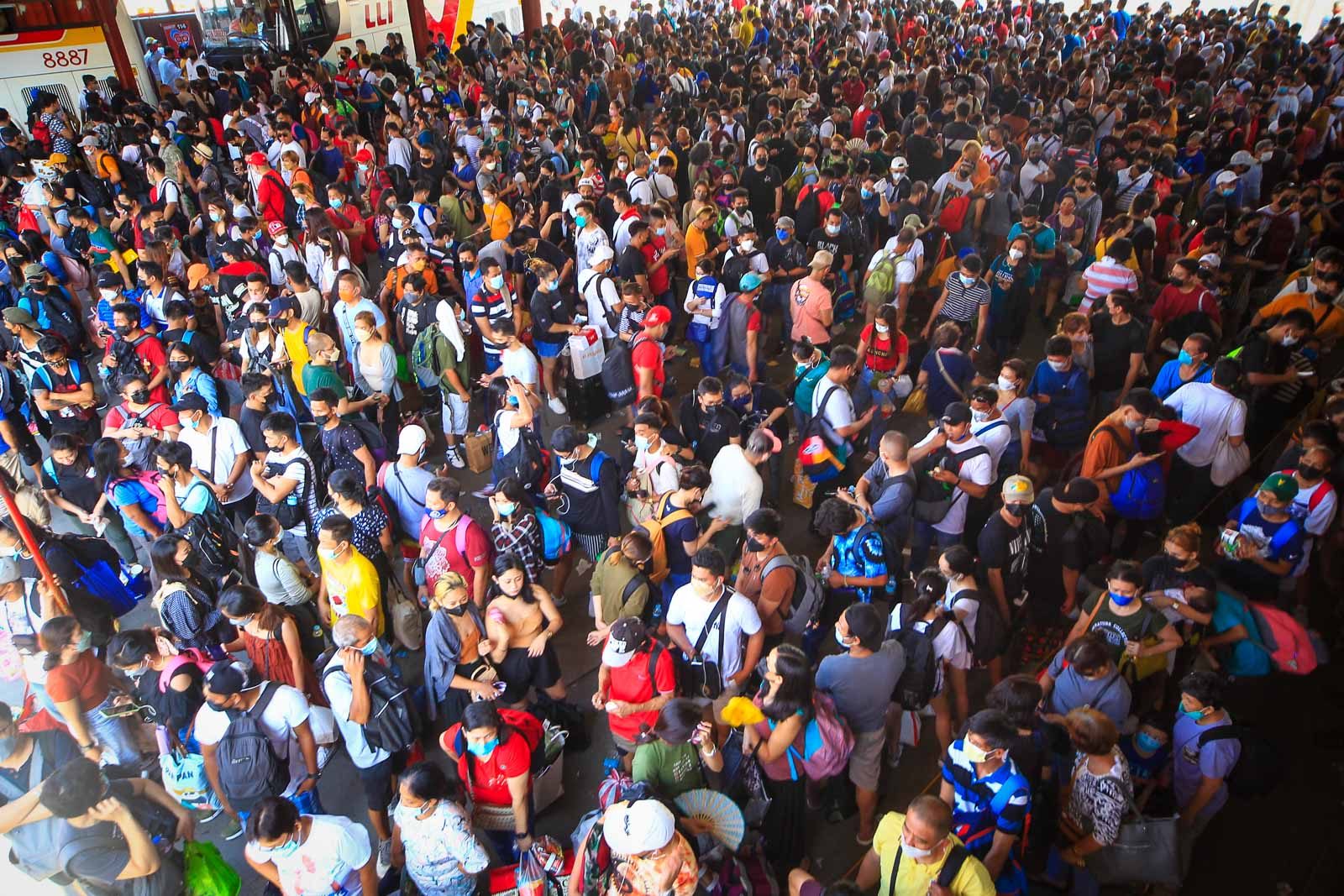SUMMARY
This is AI generated summarization, which may have errors. For context, always refer to the full article.

MANILA, Philippines – New coronavirus cases in the Philippines are on a plateau, averaging some 272 cases per day following weeks of decline. About 60% of Filipinos have received two doses of a COVID-19 vaccine.
Here’s what we’re watching this week of April 17, 2022:
Virus risks still all too real
While case numbers have dropped from March to April, the risk of COVID-19 is still all too real. The Department of Health (DOH) warned as much, as its experts saw a potentially significant increase in cases taking place as early as mid-May – if Filipinos would continue to let their guard down against the virus.
The country will be holding its national and local elections on May 9.
- In the period that cases have dropped, the DOH said compliance with health protocols like masking also fell by 7% nationwide, and 12% in Metro Manila.
- It comes just as Filipinos are traveling across the country for Holy Week, the first long-weekend holiday to take place since more than half of the Philippines was placed under Alert Level 1 since 2020. The alert level allows establishments and public transport to operate at full capacity.
- Cases are low now, but “it would be very, very, very short-sighted to assume that lower numbers of cases means an absolute lower risk,” said Dr. Mike Ryan, WHO Health Emergencies Program executive director.
- Decreased compliance with the minimum health standards lay out two projections for the country:
- 20% decrease in compliance: 34,788 active cases – including over 564 severe cases and 267 critical cases in mid-May
- 30% decrease: Active cases as high as 300,000 by mid-May
- Those numbers would surpass the peak in cases seen during the recent Omicron wave, when as many as 291,618 active cases were tallied in January 2022.
- In Metro Manila particularly, if there would be a 50% decline in compliance with health standards, Filipinos could be looking at 25,000 to 65,000 new cases daily. That is three times higher than the peak during Omicron’s wave.
- Health officials emphasized the necessity of compliance in the capital region, saying it’s well possible that cases could rise in the metropolis while dropping elsewhere across the country.
- Projections aren’t set in stone and can be influenced by our behavior and response. So if the public were to keep its guard up and get boosted, active cases across the country could plateau between 1,293 and 16,934 in mid-May.
- “Numbers do not lie,” DOH Undersecretary Maria Rosario Vergeire said. “The good news is, at this point, these are still projections.”
- So, this is what individuals can do: wear well fitting masks, isolate when sick, get vaccinated and boosted when eligible, ensure good airflow. Rather than seeing it as something that contains our day-to-day lives, these minimum health practices done all tighter allow us to freely experience life with the least risk possible.
More subvariants
The World Health Organization recently announced it was monitoring two more Omicron subvariants: BA.4 and BA.5, which have been reported in South Africa and a number of countries in Europe. The development comes just weeks after the health body named three recombinants it was also keeping an eye on.
- The WHO said the two subvariants were being tracked because of “additional mutations that need to be further studied to understand their impact on immune escape potential.”
- WHO COVID-19 technical lead Maria Van Kerkhove told reporters in a recent briefing that there was no change in epidemiology or severity for the subvariants at the moment.
- But this could change as more data is gathered, which is why it is crucial to track the virus through testing and sequencing. Currently, less than 200 sequences of BA.4 and BA.5 were available so far on GISAID, a global database of genomic data on the virus.
- “We simply cannot afford to lose sight of this virus. It’s really, really important. As the virus goes underground, we need to track it because we don’t know what comes back,” Ryan said.
Early reinfection
A recent report from the United States Centers for Disease Control and Prevention (CDC) documented 10 cases where people infected with Delta were reinfected with Omicron within 90 days. The findings are significant because it was difficult to verify early reports, considering people could experience prolonged viral shedding within three months from an initial infection.
- The study highlights the “potential limits” of immunity from infection, especially if new variants are circulating. It also shows how being up to date with vaccination – meaning you’ve received all doses you’re eligible for – remains the safest way to prevent future infections.
- Researchers confirmed the reinfections through whole genome sequencing on eight children and two adults. One patient received two doses, but was not boosted. Two others received one dose, and seven were unvaccinated.
- Reinfection in the 10 cases took place in as few as 23 days, in the case of a 12- to 17-year-old unvaccinated individual.
- The researchers also noted how limited capacity for genome sequencing and increased use of at-home tests may make it more challenging to track reinfections. Without data, it would be difficult to know how common or rare these may be.
In case you missed it: The Philippine Food and Drug Administration (FDA) approved a second COVID-19 booster dose for the elderly, immunocompromised individuals, and frontline health workers. This comes after countries like the US, Israel, Germany, and Australia green-lit a fourth short for select groups.
– Rappler.com
Add a comment
How does this make you feel?

There are no comments yet. Add your comment to start the conversation.